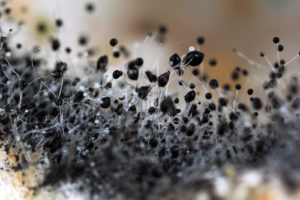Learn About Mold: The Mold Life Cycle

Mold is Dangerous Be Prepared
The circle of life can be a beautiful thing, but not when it comes to mold colonies. The mold life cycle can be fascinating on a scientific level, but on the gut level, it’s just gross.
Understanding its life cycle helps shine light on why a scientifically-proven NYC mold removal service is necessary to break that cycle down.
The Life Cycle of Mold
Moisture, nutrients, and oxygen set the stage for the mold life cycle to begin. The cycle can be put on pause for years, then restarted when the spores find hospitable conditions again.
The first life stage of mold begins with a tiny filament called a hypha. Hyphae cells go unnoticed by the naked eye. They feed on wood, paper, food, or whatever organic matter they have found.
Matured hyphae then grow larger structures called mycelium, the hairy or fuzzy part of mold that you see. Mycelia extend into the air so their spores can easily spread.
Spores are the asexual reproductive parts of mold—essentially seeds that can grow new hyphae cells and start the process over again whenever the conditions are favorable.
Break the Cycle with NYC Mold Removal
Routine cleaning does not stop mold. If you spray a multi-purpose cleaner or even douse bleach on the mold spot, you might kill most of the mold but some hyphae and spores will remain.
That’s why our NYC mold removal process includes two steps: killing the fungus with an EPA-registered cleaning agent, then applying a polymer seal to create a lasting barrier.
Stern Mold’s NYC mold removal service is surprisingly affordable, fast, easy, and safe. Contact us today for a free mold inspection.
